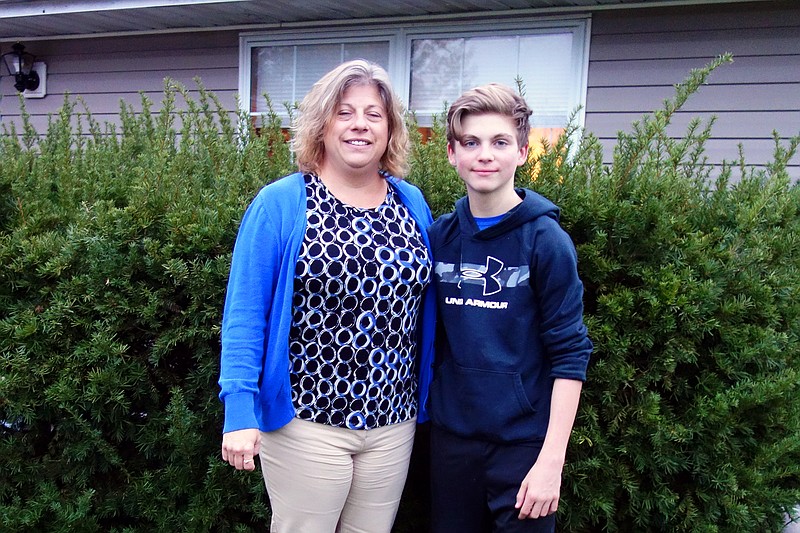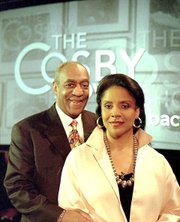When Joshua Dillon was 10 years old, his mother, June Dillon Petree, saw something wasn't quite right with his shoulders.
"I noticed his shoulders were off, but I thought his back just needed popped," she said Tuesday.
At his next check-up, Dillon's doctor made the diagnosis: scoliosis.
That diagnosis took Dillon's family through a journey into experimental medicine. Now, Petree said, they want to share their story to make other families aware of the new surgery that helped correct Dillon's scoliosis without ending his active lifestyle.
Though relatively mild at first, the curvature in his thoracic vertebrae (the ones below the neck and above the lower back) rapidly worsened as Dillon grew. By age 13, it was clear non-surgical methods to correct the curve had failed.
Dillon said he wasn't in pain, but he was worried about how scoliosis might affect his ability to participate in the sports he loves: football, soccer, baseball and especially wrestling. He also hopes to one day join the United States Air Force. The stars- and stripes-printed back brace he had to wear kept him from bending and twisting fluidly, the way his sports demanded.
"I was walking like this," he said, demonstrating his hunched posture.
Petree said she and her husband, Darrell Dillon, were reluctant to put Joshua through the usual surgical treatment for scoliosis, which involves realigning the curving vertebrae and fusing them together so they stay straight. A spinal fusion may stunt growth in the vertebrae and reduces range of motion, since the fused area of the spine is now rigid rather than flexible.
The surgery
Dillon's pediatric orthopaedist, Dr. Daniel Hoernschemeyer of MU Health Care, suggested an alternative solution: vertebral body tethering. The surgery entered its trial phase in 2010 and, though approved by the U.S. Food and Drug Administration for marketing in August, it remains relatively rare. It's designed specifically for use in growing children.
VBT involves inserting bone screws into the vertebrae along the curve. The surgeon then runs a flexible yet durable cord along those screws, applying tension to strengthen the patient's spine. As the child grows, his or her spine continues to straighten.
"I was excited for the surgery," Dillon said, admitting he didn't pay much attention to details about potential complications. "Dr. Dan said one kid who got the surgery went on to be a professional wrestler in college."
In January, Dillon's spinal curve was at 48 degrees. The family was given the option of two dates for the surgery and picked the earlier April date, in hopes Dillon would be all healed up by football season.
"Thank God we did because his curve grew so much so fast," Petree said. "He hit a growth spurt."
In March and April, the curvature increased from 54 to 58 degrees.
"We were told by the rate his spinal curvature was moving, he would most likely have been in a wheelchair by the age of 18," Petree said.
Dillon's parents waited for 10 tense hours while Hoernschemeyer performed the surgery - the 61st VBT surgery ever performed. It went off without a hitch, and Dillon said recovery was a breeze.
Within a couple of days, he could manage the pain with just ibuprofen. He had to avoid moving in certain ways for six weeks after surgery, but now he's fully cleared to participate in sports. Now, at age 14, his curvature is down to 12 degrees as of Oct. 7. And he's shot up by more than 3 inches, which makes him officially taller than one of his sisters.
"In just a few months, it's like night and day," Petree said. "It's more than we ever expected. The prognosis is that his spine will be completely straight."
Paying for the surgery almost proved a challenge. VBT is such a new treatment many insurance companies don't cover it, which could have left Dillon's family with a bill of about $120,000. However, Petree said, MU Health Care was able to work with the insurer to get it covered.
Though no surgery is completely without risks - this article from the St. Louis Children's Hospital has a good rundown - Petree and Dillon said they wholeheartedly recommend VBT to other children facing a scoliosis diagnosis.
"Nothing holds my determined child back, including scoliosis," Petree said.


